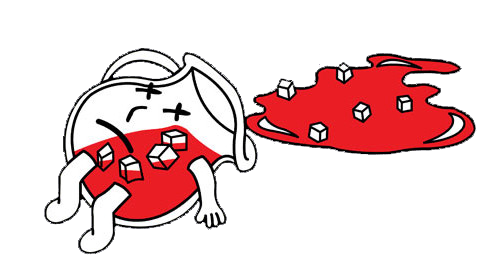@Laced another banger

Uranus and Posideon are clearly present, unless the Whale is Pluton, Franky is the stand in for Pluton as he's clearly framed as a part of thr mural
 Sir Swagalot
Sir Swagalotnot even close to dressrosa yet, but doflamingo’s character design is one of the main reasons why i started this series…seriously one of my favorites i’ve seen in any form of animation/comics. pink is my favorite color and i just love how wild this mf appears

Dofy is the best villain in the series and dressrosa is personally my favorite arc I wouldn’t recommend the anime for it though either do one pace or read it
 Nacre
NacreDofy is the best villain in the series and dressrosa is personally my favorite arc I wouldn’t recommend the anime for it though either do one pace or read it
im on episode 420 of my rewatch and its been a blast. Yes it takes forever but i was able to do that in a year and a half with pretty minimal watch time
 Nacre
NacreDofy is the best villain in the series and dressrosa is personally my favorite arc I wouldn’t recommend the anime for it though either do one pace or read it
Or wait on new anime
 Nacre
NacreDofy is the best villain in the series and dressrosa is personally my favorite arc I wouldn’t recommend the anime for it though either do one pace or read it
My fav villain in OP fr

 Sir Swagalot
Sir Swagaloti’m at the part where zoro, wyper, robin, and old kami just challenged eneru, so i’m hoping it’ll take off from here

Sit through it. Skypea one, if not the most, important arc
 Nacre
NacreDofy is the best villain in the series and dressrosa is personally my favorite arc I wouldn’t recommend the anime for it though either do one pace or read it
oh yeah i’ve just been reading the manga and watching my favorite moments on youtube tbh
 MrMudManMood
MrMudManMoodThink it's gonna be important to check the official translation for this week's chapter
Been awhile since I’ve looked forward to the official translations. I’ll post anything from the podcast the translator is usually on if there’s any editorial note

 Osama bin Harden
Osama bin HardenBeen awhile since I’ve looked forward to the official translations. I’ll post anything from the podcast the translator is usually on if there’s any editorial note

Oh yeah, didn't even think about the podcast, thank you in advance for doing that
 Sir Swagalot
Sir Swagalotoh yeah i’ve just been reading the manga and watching my favorite moments on youtube tbh
That’s the best way to do it the anime pacing when it gets to the new world is terrible everything is so stretched out
Notes from the official translator for Chapter 1138

He went through line by line and I will take the most interesting parts. The First World was all straightforward except for the last line.The First World
“And they will never meet.”
Open to interpretation and nothing in the text in Japanese is explicit about what that could mean.
The Second World
“Within the void there was breath.”
The Japanese word for void used is a standard way to present the topic of void. It is not the void that appears in the term Void Century (more on that later). His initial inclination is that void could be interpreted as space and is a reference to space travel. Potentially that alien came from space type s\*\*\*.
“The forest god tamed demons and the sun spread the fires of war.”
It is translated as “tamed demons”, but this interpretation isn't entirely confirmed and is somewhat speculative on his part. The kanji used is simply “ma”, which appears in many compound words like Akuma or Majin and generally conveys meanings related to demonic, monstrous, or evil qualities. The verb Oda uses for “taming” implies an active, living creature or entity rather than a passive force or power. The rest of the sentence, however, is straightforward and clear.
”Those of the half moon dreamed.”
He clarifies that there are two references to "half-moon" in the second- and third world, but they are expressed using different terms in Japanese. For specific contextual reasons, both were translated as "half-moon." The phrase in question is "hangetsu no hito wa yume o mita". Oda uses "hito" to mean "person,” and while the translator opted for "those of the half-moon," it could also be worded as "the half-moon person." Since Japanese doesn’t distinguish between singular and plural here, this phrasing remains open to revision.
The kanji for "hangetsu" literally means "half-moon” as it has the characters for half and moon. The translator initially considered changing "half-moon" to "quarter-moon" in this context, as a half-moon, when viewed from Earth, technically is a quarter of the moon's full surface. However, without additional context and considering the recurring imagery of moons and half-moons in the series (such as the significance of the "D”), he decided to stick with the literal translation.
”Those of the moon dreamed.”
The following line, "tsuki no hito wa yume o mita", mirrors the previous one but omits the word "half”. The rest of the translation is straightforward, with "hito" again being flexible in meaning—it could refer to a singular "person" or a plural "people."
The Third World
“Within the chaos there was emptiness”
The translator would have preferred to use the word "void" instead of "emptiness" here, but they had already used "void" to translate a different term "kyomu" at the beginning of The Second World. "Kyomu" is a word a\*\*\*ogous to empty space, like outer space, and the translator wasn’t sure of another suitable term to describe it (though he acknowledged that "vacuum" could be a possible alternative). The Japanese term used in this specific sentence for "emptiness" is "kūhaku", which literally means "blank space." This is the same term Oda uses in "Kūhaku no Hyaku-nen" or "Void Century".
The translator explains that the line reads clearly as, "Within the chaos of the world, there is a blank of history." As previously mentioned, the term for "half-moon" here is not "hangetsu" but rather "katawaredzuki", a poetic term meaning "broken moon" and an ancient synonym for an incomplete moon. This term has appeared in the series before and is sourced from the Manyoshu, an ancient collection of Japanese poetry. The translator chose to use "half-moon" in this instance because Oda had used a phrase from the Manyoshu as the title for Chapter 292: To Meet, Like the Half-Moon Hidden by Clouds or "Afukoto wa Katawaredzuki no Kumogakureke" (Skypiea enjoyers, STAND UP!). To maintain consistency with the VIZ translation, the translator chose to align the text accordingly.
The translator goes on to describe the chapter, noting how interesting it is that it corresponds with the mural and suggesting that Oda might be drawing attention to or creating a word association with that story.
“The sun god dances and laughs, guiding the world to its end.”
Finally, the phrase "the end" in this sentence is open to interpretation and doesn’t necessarily imply destruction.
 Osama bin Harden· edited
Osama bin Harden· editedNotes from the official translator for Chapter 1138

He went through line by line and I will take the most interesting parts. The First World was all straightforward except for the last line.The First World
“And they will never meet.”
Open to interpretation and nothing in the text in Japanese is explicit about what that could mean.
The Second World
“Within the void there was breath.”
The Japanese word for void used is a standard way to present the topic of void. It is not the void that appears in the term Void Century (more on that later). His initial inclination is that void could be interpreted as space and is a reference to space travel. Potentially that alien came from space type s\*\*\*.
“The forest god tamed demons and the sun spread the fires of war.”
It is translated as “tamed demons”, but this interpretation isn't entirely confirmed and is somewhat speculative on his part. The kanji used is simply “ma”, which appears in many compound words like Akuma or Majin and generally conveys meanings related to demonic, monstrous, or evil qualities. The verb Oda uses for “taming” implies an active, living creature or entity rather than a passive force or power. The rest of the sentence, however, is straightforward and clear.
”Those of the half moon dreamed.”
He clarifies that there are two references to "half-moon" in the second- and third world, but they are expressed using different terms in Japanese. For specific contextual reasons, both were translated as "half-moon." The phrase in question is "hangetsu no hito wa yume o mita". Oda uses "hito" to mean "person,” and while the translator opted for "those of the half-moon," it could also be worded as "the half-moon person." Since Japanese doesn’t distinguish between singular and plural here, this phrasing remains open to revision.
The kanji for "hangetsu" literally means "half-moon” as it has the characters for half and moon. The translator initially considered changing "half-moon" to "quarter-moon" in this context, as a half-moon, when viewed from Earth, technically is a quarter of the moon's full surface. However, without additional context and considering the recurring imagery of moons and half-moons in the series (such as the significance of the "D”), he decided to stick with the literal translation.
”Those of the moon dreamed.”
The following line, "tsuki no hito wa yume o mita", mirrors the previous one but omits the word "half”. The rest of the translation is straightforward, with "hito" again being flexible in meaning—it could refer to a singular "person" or a plural "people."
The Third World
“Within the chaos there was emptiness”
The translator would have preferred to use the word "void" instead of "emptiness" here, but they had already used "void" to translate a different term "kyomu" at the beginning of The Second World. "Kyomu" is a word a\*\*\*ogous to empty space, like outer space, and the translator wasn’t sure of another suitable term to describe it (though he acknowledged that "vacuum" could be a possible alternative). The Japanese term used in this specific sentence for "emptiness" is "kūhaku", which literally means "blank space." This is the same term Oda uses in "Kūhaku no Hyaku-nen" or "Void Century".
The translator explains that the line reads clearly as, "Within the chaos of the world, there is a blank of history." As previously mentioned, the term for "half-moon" here is not "hangetsu" but rather "katawaredzuki", a poetic term meaning "broken moon" and an ancient synonym for an incomplete moon. This term has appeared in the series before and is sourced from the Manyoshu, an ancient collection of Japanese poetry. The translator chose to use "half-moon" in this instance because Oda had used a phrase from the Manyoshu as the title for Chapter 292: To Meet, Like the Half-Moon Hidden by Clouds or "Afukoto wa Katawaredzuki no Kumogakureke" (Skypiea enjoyers, STAND UP!). To maintain consistency with the VIZ translation, the translator chose to align the text accordingly.
The translator goes on to describe the chapter, noting how interesting it is that it corresponds with the mural and suggesting that Oda might be drawing attention to or creating a word association with that story.
“The sun god dances and laughs, guiding the world to its end.”
Finally, the phrase "the end" in this sentence is open to interpretation and doesn’t necessarily imply destruction.
Real as f*** for this, thank you
Is this all from the podcast?
 MrMudManMood
MrMudManMoodReal as f*** for this, thank you
Is this all from the podcast?
Yes, he starts yapping around 52 min in if you want to hear it yourself.
 Osama bin Harden
Osama bin HardenYes, he starts yapping around 52 min in if you want to hear it yourself.
Thank you
 Osama bin Harden
Osama bin HardenFound the perfect video to eat to
!https://youtu.be/LtufzeTZfMA?si=r1FBaNt9GZJpGBBA
Been looking forward to this one


 Osama bin Harden
Osama bin HardenFound the perfect video to eat to
!https://youtu.be/LtufzeTZfMA?si=r1FBaNt9GZJpGBBA

As someone who routinely s*** on OP the lore in this show is insane and I'm anime only

 Osama bin Harden
Osama bin HardenFound the perfect video to eat to
!https://youtu.be/LtufzeTZfMA?si=r1FBaNt9GZJpGBBA
That being Blackbeard and not imu is interesting. Ima have to watch this





